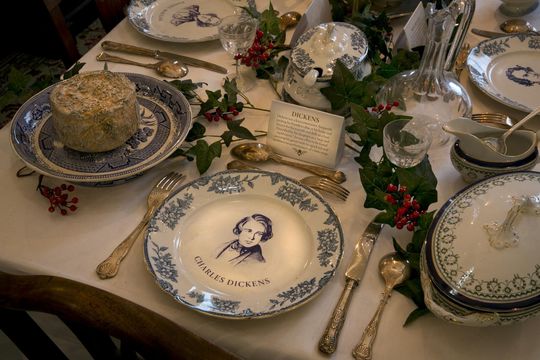
How tea traditions punctuate the British day
It starts with an early morning cup of tea, perhaps with a bacon sandwich or snatched in a takeout cup en route to work. Mid-morning’s highlight is a mug of tea with a cookie. There’s an after-lunch cup of tea, or if it’s a day out shopping or sightseeing, a cream tea with scones, clotted cream and berries or jam. For a serious treat, there’s afternoon tea in a teashop or elegant hotel, where finger sandwiches and pretty pastries parade on a tiered stand, and tea streams from its silver pot into china cups.
Indeed, since tea arrived from China in the 1650s it has not only shaped daily social life, but also the country’s economy and even at times its foreign policy.
[caption id="ItsAlwaysTimeforTea_Feature" align="alignleft" width="264"]
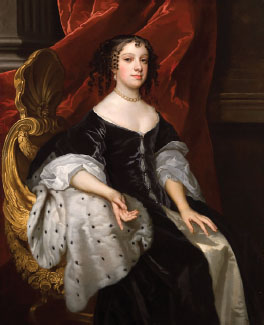
WIKIMEDIA
In 1658 an early advertisement for tea called it “That excellent and by all Physicians approved China drink.” The basis for physicians’ approval was explained in 1660: “It strengtheneth the Memory, it overcometh superfluous Sleep…and expelleth Infections.” Such endorsements made many early British teatimes therapeutic. Diarist Samuel Pepys records drinking tea as a defense against plague. His wife’s apothecary recommended tea for “defluxions.”
Medical approbations of tea lasted long and still continue, but it was Catherine of Braganza, the Portuguese wife of King Charles II, who made teatime fun. She arrived in 1661 with a dowry that included a chest of tea. Used to drinking it in Portugal, she soon won over English ladies, and tea became quintessentially a woman’s drink. Soon playwright William Congreve was describing them “retiring to their tea and scandal,” and his character Millament insists on her right to be “sole Empress of my Tea table” before agreeing to wed.
Though women adored drinking tea together, they also drank it with men, typically after dinner, when it was served with little cakes. That was a major social change. Previously Britain’s everyday drink had been beer. Average daily consumption among all classes in Elizabethan times was about six pints. Drunkenness was common; evenings could be riotous and dangerous for women. Teatime gave men and women a chance to socialize and helped develop companionable marriages.
Men could also drink tea in one of the coffeehouses. Like today’s cafés, they served tea as well as coffee. Sharing a nonalcoholic beverage enabled men to have serious business discussions. Both the Bank of England and Lloyd’s insurance got their start in London coffeehouses, and in Edinburgh they were among the venues of the intellectuals of the 18th-century Scottish enlightenment.
[caption id="" align="alignleft" width="262"]
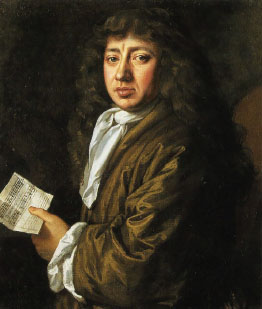
WIKIMEDIA
Yet tea was expensive. When Pepys was paying 2 shillings for a fine tavern dinner, tea cost between 16 and 50 shillings a pound, so it was often kept under lock and key. Servants brought water to their mistresses, who opened their precious teacaddies and made tea themselves. But tea leaves can be infused several times. After teatime ended in the drawing room, the teapot came down to the kitchen, where servants made a brew—or maybe two or three—for themselves. The cook would then sell the spent leaves to dealers, who dried them on heated metal trays and resold them to poorer people, often adding dried blackberry leaves to eke them out.
In these ways, tea drinking became equally popular among the working classes. This startled foreign visitors. In 1784 the French Comte de Rochefoucauld wrote, “The humblest peasant has his tea twice a day just like the rich man.” In 1809 Erik Geier from Sweden saw “coal carters and workmen drinking cups of delicious beverage.” John Galt wrote of 18th-century Scotswomen gathering outdoors to make tea “in a pint stoup … for there were but few had cups and saucers.”
For teatime in wealthy households, cups, saucers and other tea accoutrements were essentials. The East India Company ships that carried tea also brought the porcelain cups the Chinese drank it from. They were beautifully decorated, often in blue, and also thin and translucent. In contrast, the earthenware cups of Britain were thick and clunky. Even worse, some drinking vessels were made from wood or leather. The pleasures of sipping tea from delicate Chinese porcelain were clear, and vast quantities were imported. In 1709 one typical order required “Forty tons of China ware of the sort undermentioned…
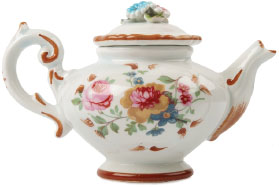
50,000 teacups of various patterns
50,00 saucers ditto
5,000 teapots with straight spouts
5,000 small deep plates for the teapots
8,000 milk pots
12,000 boats for the teaspoons
2,000 small tea canisters
3,000 sugar dishes
3,000 bowls of about 3 pints
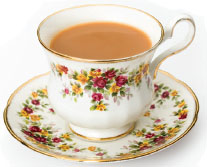
Chinese porcelain complemented tea perfectly. Ships could carry it as ballast, leaving higher and dryer spaces for carrying the tea itself; tea tasted even better from thin cups, and pretty teaware made teatime elegant. Now known as “export china,” many pieces survive in museums or antique stores. Among them are sugar bowls and milk jugs. The Chinese never added milk or sugar to tea, so these were made especially for Britain, where sugar was popular in almost everything, and milk had been an early addition to tea. One explanation is that familiar hot drinks such as possets of beer or wine often included them, so they seemed natural in the new hot drink from China.
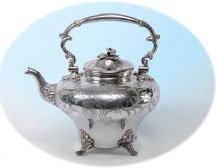
Like tea itself, however, porcelain was expensive. European potters wanted a share of the market, but they did not know how to make it and the Chinese weren’t telling. The race was on to discover the secret. By the 1760s potteries in Bow, Chelsea, Coalport and Worcester were making porcelain containing calcined bone.
In the 1790s Josiah Spode codified the mixture of bone, China stone and kaolin to create bone china. It was easy to fire and decorate, and unrivaled for whiteness, brilliance and durability. Spode’s pottery was in Stoke-on-Trent in Staffordshire and soon he and potters such as Josiah Wedgwood, Thomas Minton and John Aynsley had put their region on the map. In Jane Austen’s Northanger Abbey, the vain General Tilney accepts a compliment to his Staffordshire china breakfast set but says he is thinking of buying new because this was “quite an old set purchased two years ago” and china “was much improved” since then. Having such customers—eager to buy local and buy often—gave teatime and its bone china dishes major economic roles in the industrial revolution.
The Chinese had no need to buy bone china or other British products. They therefore insisted on bullion as payment for tea. The British evaded this by growing opium in India and exporting it to China. When the Chinese banned opium use, the country fought two wars—the Opium Wars of 1839 and 1841—to reverse this law.
Such gunboat foreign policy was reinforced by efforts to find tea somewhere in the Empire. In the 1830s it was identified as growing wild in Assam in northern India. It was immediately cultivated and soon tea plantations were marching across the hillsides of Assam, Darjeeling and Ceylon.
By the end of the 19th century Britain had almost entirely switched to drinking Indian tea. It came from a different variety of the tea plant, and so it was darker and stronger—“brisker” in tea parlance—than Chinese tea, and cheaper too.
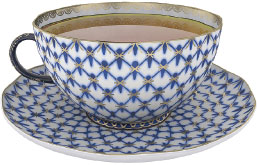
Britain now had many different teatimes. One was a temperance tea. Though tea had replaced beer as the basic drink, alcohol retained its charms. Nineteenth-century reformers hammered away at its abuse, and tea was a major weapon. In 1882 Prime Minister William Gladstone hailed it as “a powerful champion able to encounter alcoholic drink in a fair field and throw it in a fair fight.” Temperance teas demonstrated its prowess by serving meals with tea to counter the demon drink.
Sunday School teas were a popular annual treat for poor people, often marking the anniversary of the founding of a chapel. Typically, there were children’s games followed by tea with bread and butter and cake, and perhaps a currant bun to take home. Wealthier children typically had tea every day in their nurseries, where they might toast muffins on the fire, and their nanny would school them in teatime etiquette.
Young people old enough to go out into the Edwardian world could attend tea dances. Often in a hotel, they featured a pianist or small band so teatime could be delightfully interrupted by dancing. Popular well into the 20th century, tea dances reached their apogee in the 1920s in the tango teas of the Savoy Hotel in London.
All teatimes share a basic food plan. There is bread, usually in the form of sandwiches or as a plain pastry, such as a scone served with jam and often cream. Afternoon tea emphasizes daintiness by cutting sandwiches into fingers and filling them with savory delicacies. It also has cakes and delicious small pastries. It developed in the 19th century, when dinner was served later in the evening. In afternoons, when dinner was still a distant prospect, many shared the Duchess of Bedford’s experience of “a sinking feeling in the stomach.” Afternoon tea was created to stave it off. But working and middle-class breadwinners were at work during the afternoon tea. When they came home they needed something more substantial. They created high tea, which included a hot savory dish, lots of different bread and pastries and a big cake for slicing. Today it has become supper, though many still call it simply “tea.”
As for afternoon tea, few people now eat it every day. It is a treat— the highlight of a day in town or on vacation, or perhaps taken to celebrate a birthday or a rare meeting of old friends. It’s teatime at its best.
Lovely Places for Afternoon Tea
Lovely Places for Afternoon Tea No visitor to Britain can miss the signs for afternoon tea and cream teas. They’re everywhere. You can get it in cafes and pubs, in ancient cottages and modern hotels, in castles, on canal boats, in old windmills and in ancient churches. It’s a don’t-miss experience. Here is a tiny selection of wonderful places to enjoy it.
Malmaison, 1 Wharfside St., Birmingham is an imaginatively designed hotel located in a former Royal Mail sorting office. It serves a substantial afternoon tea catering to on-trend tastes. A mini-burger and a chipotle chicken and avocado wrap feature among its sandwiches. Sweet temptations include trifle, a salted chocolate brownie and more. Cost is £17.50.
malmaison.com
The Refectory Café, Chester Cathedral, Chester The 13th-century monks of Chester Cathedral could never have had tea in their refectory, but you can. You can order tea, scones and cakes at any time, but for a proper afternoon tea with fine china and a tiered tea stand, make a reservation 24 hours ahead so pastries and cakes can be made for you—scones and finger sandwiches as well. £10 per person.
ChesterCathedral.com

DANA HUNTLEY
Tu Hwnt i’r Bont, Llanrwyst, Conwy The name means “beyond the bridge” in English, and that is the only address of this fairy-tale pretty teashop, sited on the B5106 at the end of a 17th-century bridge designed by Inigo Jones. Here Welsh Afternoon Tea (£12.40) includes bread and butter with homemade jam, scones, cream, cakes and buttered bara brith—Wales’ classic moist raisin bread. The 15th-century National Trust property was once a courthouse. The beams are low, the ornaments are copper and brass, and the china is willow pattern—long a Welsh favorite. It’s open seven days a week mid-March to November 5, weekends only in November and December, closed January to mid-March.
tuhwntirbont.co.uk
The Savoy Hotel, The Strand, London For sheer elegance and luxury it’s hard to beat afternoon tea in the Savoy’s beautiful Thames Foyer, where a pianist plays under the glass-domed roof and the Thames runs just outside the windows. Be prepared to hear “Happy Birthday” because this is one of London’s favorite places for celebrations. Afternoon tea is £50 or £63 with Louis Roederer champagne. High tea includes smoked salmon with scrambled eggs and toasted crumpets as well as usual afternoon tea delicacies for £52.50.
[email protected]





Comments